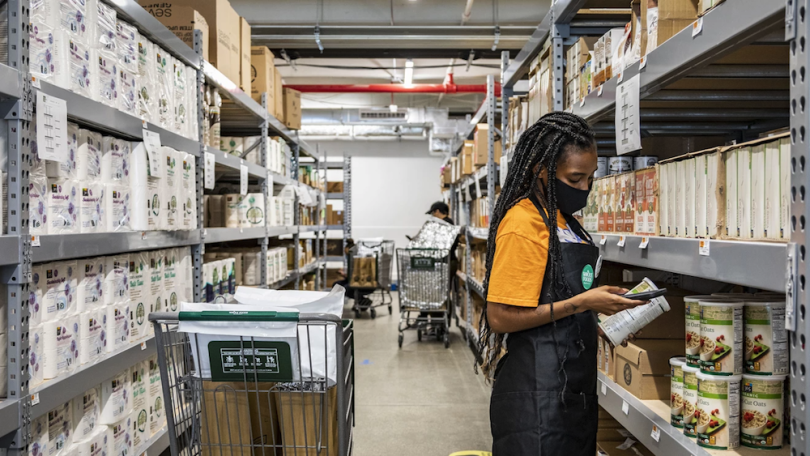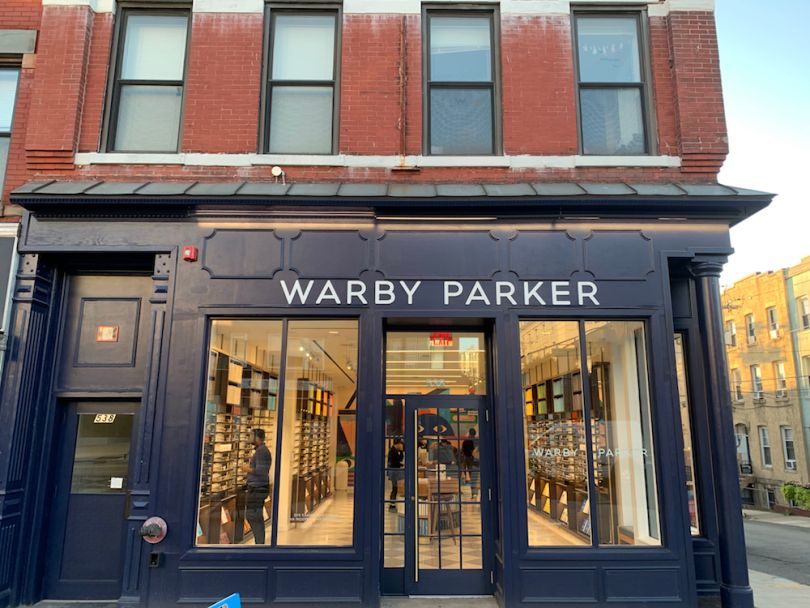It’s said that society’s increasing reliance on software has turned every company into a tech company. Well, in 2020 every consumer brand also became an e-commerce company, forced to react to accelerating shifts in consumer patterns that blend the best elements of in-store shopping with the convenience of doing so online.
The advent of data-driven experience personalization, product recommendations, augmented reality, immersive shopping experiences and other buzzy technological advances are well-known drivers of the shift to online shopping. But there’s more to success in the e-commerce world than astute algorithms and flashy AR — amid an unprecedented surge in online demand, logistics, infrastructure and fulfillment were just as important.
In the chaos of the past year, six brands stood out to us for handling the shift to online especially well. Here, we examine the keys to their success.

Costco: An Emphasis On Logistics
To supplement its almost 800 warehouses worldwide, Costco also operates e-commerce shopping experiences in eight countries. In its most recent sales figures, the company’s e-commerce sales were up more than 75 percent in the 18 weeks before January 3. That’s not all: In its fourth fiscal quarter earnings, Costco reported a 91 percent jump in online sales. By September, 10 percent of Costco’s sales were occurring online — doubling its 2019 share.
The company moved fast to secure its e-commerce systems in anticipation of this massive jump in online sales, announcing by March 17 that it had made a $1 billion acquisition of last-mile delivery service provider Innovel Solutions. The two companies had worked together since 2015, and in a statement, CEO Craig Jelinek said the acquisition “will allow us to grow our e-commerce sales of ‘big and bulky’ items” — large appliances, televisions, furniture, mattresses, fitness equipment and so on — “at a faster rate.”
“We see a big opportunity to build our last-mile business in big ticket items, bulk items.”
Nevertheless, in a December interview with CNBC, Jelinek said that while “we see a big opportunity to build our last-mile business in big ticket items, bulk items… our apparel business continues to grow online,” Costco will continue to focus on in-store shopping in the long term. “It’s still important to get people physically in the stores. I still think brick-and-mortar is not going to go away.”

Whole Foods: Bringing The Fulfilment Center Model To Groceries
After temporarily converting six stores around the country to online-only shopping to meet unprecedented delivery demand, Whole Foods officially opened its first location specifically designed to fulfill online orders in Brooklyn, New York, in September. Amazon has owned Whole Foods since 2017, and in a blog post, the company said the idea of so-called “dark” grocery stores had been around for more than a year — predating the pandemic and the subsequent tripling in online sales in the second quarter of 2020.
“This store will be fully staffed by Whole Foods Market Team Members who are 100 percent dedicated to facilitating grocery delivery — enabling them to quickly receive, shop and prepare orders for delivery to more customers than ever before,” the company wrote.
“These improvements not only reduce costs but also provide for an improved end-customer experience when purchasing items online.”
The rollout of its first online-only store complements Whole Foods engineers’ back-end efforts to optimize the company’s e-commerce systems. “One project we have been working on is reducing the time spent fulfilling online orders, along with improving the ability to support the substitution of items that may no longer be available at the time of fulfillment,” Senior Software Engineer Denys Tseng recently told Built In. “These improvements not only reduce costs but also provide for an improved end-customer experience when purchasing items online.”

lululemon: Capitalizing on an Omnichannel Approach
While it couldn’t have predicted the coming of the pandemic in 2020, lululemon was ready.
“We have been investing in our digital capabilities and enhancing the experience of our e-commerce sites for several years, which enabled us to quickly respond to the accelerated shift to [omnichannel] this year,” CEO Calvin McDonald said in a December earnings call. For the third quarter ending November 1, the company said its e-commerce sales grew by a whopping 93 percent year over year. Lululemon also acquired in-home fitness company Mirror (pictured above) this year in a bid to ride the home workout wave.
“Our investments are paying off as our sites have demonstrated the ability to more than handle the anticipated spike in volume.”
“Our investments are paying off as our sites have demonstrated the ability to more than handle the anticipated spike in volume,” CFO Meghan Frank added.
To supplement its existing e-commerce systems, lululemon engineers rolled out a number of new features and capabilities this year. These include the ability to buy online and pick up in-store or at the curbside; scheduling shopping appointments before, during and after normal operating hours; mobile point-of-sale systems to process transactions outside; virtual waitlist systems; and a digital education program to allow online shoppers to access the same customer service they would experience in-store.

Stitch Fix: Investments in Product Innovation
By combining advanced data science and a team of more than 5,000 professional stylists, Stitch Fix has been delivering so-called “Fixes” — five clothing items selected to match a user’s personal style, size and fit — for more than ten years now. In 2019 the company introduced “Shop,” a product that allows users to browse and buy items directly. And in 2020, Stitch Fix complemented these offerings with a number of new features and functionalities.
These include a virtual shopping bag tool to help save items across multiple devices, trackable returns and a “Trending For You” feature, a data science product that recommends looks based on a user’s personal style assessed across millions of data points.
“40 percent of Stitch Fix women’s clients shared that receiving a personalized service was more important now than before COVID-19.”
In a year-end blog post, the company predicted that online personalization is here to stay beyond the pandemic. “This year, 40 percent of Stitch Fix women’s clients shared that receiving a personalized service was more important now than before COVID-19, and 30 percent said they are looking for new ways to seek out and receive advice online,” they wrote. To support this trend, Stitch Fix says it has implemented a “highly data-driven inventory model” on the back end, allowing for immediate adjustments to its product lines based on client feedback.

Beautycounter: Blurring The Line Between Off- and Online
Some in-person shopping experiences are more difficult to simulate than others online. For example, makeup companies — where trying items on and consulting with assistants can make the difference between a good and bad product experience — have been forced to get particularly creative.
Ethical makeup retailer Beautycounter accepted the challenge with gusto, installing a studio in a new Los Angeles store last month designed specifically for live streaming. Customers tune in remotely to browse the aisles, attend community events and catch makeup tutorials and demonstrations from their home. For Founder and CEO Greg Renfrew, the novelty of the experience is entirely the point, referencing recent McKinsey survey data that suggests brand loyalty is on the wane. With so many people now jumping between brands — McKinsey says 75 percent of U.S. consumers have tried a new shopping behavior in response to the pandemic — Renfrew believes a novel experience like Beautycounter’s in-store livestreams can win over new customers.
“While the customer can’t actually test a product from across their screen, they can talk to an expert about what color might work best or what look they’re trying to create.”
“It replicates the two-way conversation you would be able to have with the brand in-store,” Renfrew said of the livestream in an interview with Fast Company. “While the customer can’t actually test a product from across their screen, they can talk to an expert about what color might work best or what look they’re trying to create.”

Warby Parker: A Strong E-Commerce Foundation Pays Dividends
With a solid grounding in e-commerce technology and logistics, few businesses were as well-placed to ride out the pandemic as Warby Parker. The company was founded a decade ago as an online seller of prescription glasses, with users ordering up to five potential frames to their home, trying them on and sending back the rejects.
In 2017, Warby Parker launched the Prescription Check app, through which users can extend a glasses prescription using a telehealth service — a full three years before COVID-19 would take telehealth services mainstream. The company followed this up with an augmented reality feature that let users virtually “try on” new frames through their phone.
With such a strong e-commerce foundation, Warby Parker went ahead and raised $245 million in fresh funding this August — a round that brings its valuation to $3 billion, according to TechCrunch. The company’s funding total now stands at $535.5 million.
Including 60+ Pages of Data-Driven Insights



